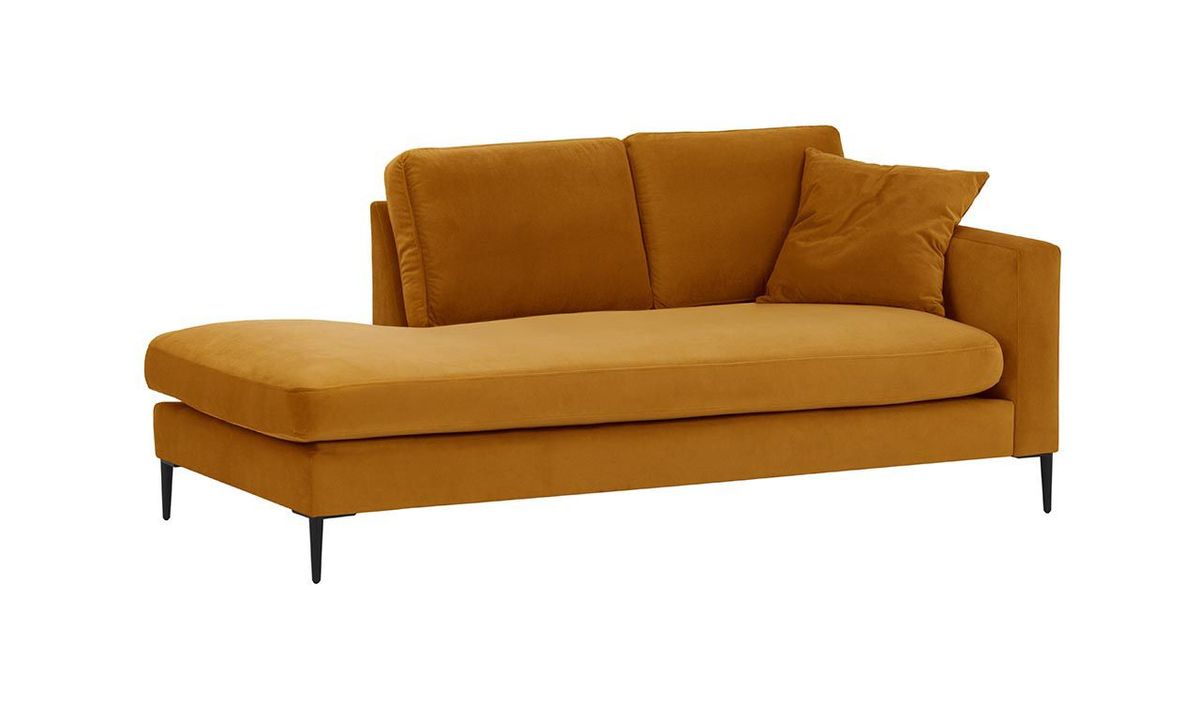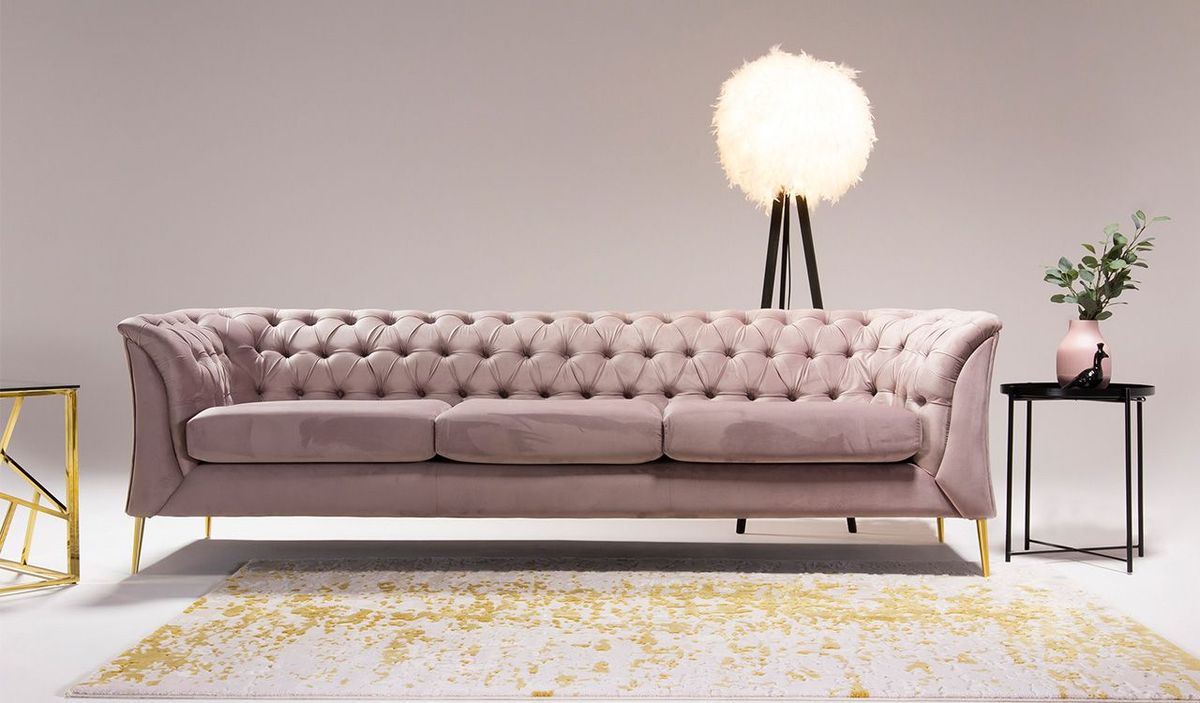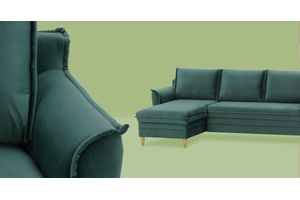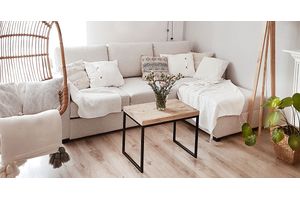
How to furnish a living room in an apartment or flat - advice and inspiration
The smaller the space, the more challenging it can be to successfully arrange the layout. With a few clever interior design tips and tricks, we can make sure the space works well for you and the whole household. Whilst access for furniture is one of the main considerations, it is possible to create an original, functional, bright, and airy room. Let’s look at where we can get further inspiration.
How to arrange your living room furniture in four simple steps
The key to a successful interior scheme in a small space is planning. Think about the shape and area of the room, if there are any features that can be utilised and how storage can be maximised. Consider how many people will use the space on a daily basis and what requirements are needed for guests and family visits.
- open plan living – often to maximise space, a living room will be combined with the kitchen and dining areas. In this case it is good to choose furniture that can create a natural divide, such as a corner sofa. This zoning technique allows you to define the functionality of both spaces in a subtle but effective way. Ensure there is enough space to move between areas effectively
- living room shape – it is more straight forward to arrange a square living room, where compromises don’t need to be made. A rectangular space is more challenging but this doesn’t mean it can’t be successful. Ensure the space is arranged without it looking like a corridor. The key is to arrange the furniture in such a way that it creates a curved walkway, and not placing all the furniture against the wall. Corner sofas can help with creating a divide.
- entrance to the living room – to create a bright and airy space when you walk in, having the entrance opposite a window works very well, giving the illusion of a larger space. However, we understand this isn’t always possible to arrange. The most important point to remember is not to clutter the entrance.
- effective lighting – creating a bright room with lighting options will help with a smaller room. Wall lights are space saving and offer beautiful atmospheric lighting in the evening. Floor lights are very useful in smaller spaces as they don’t take up a lot of floor space and can be tucked neatly behind a chair or sofa.

How to plan your living room space
First start by planning your priorities for the space. Will your living room be used just for relaxing, or do you need space for a home office desk too? Do you need somewhere for occasional overnight guests to sleep? Do you do a lot of entertaining? Is it an adults-only retreat or do you need somewhere for the kids and all their paraphernalia? What storage do you need? Once you’ve worked out your ‘needs’, then we can see if there’s any room for the ‘wants’.
Does your living room have alcoves and nooks that lend themselves to creative storage or, a perfect place for an occasional chair or side table? A narrow console table can work beautifully behind a sofa for additional display and storage. Make the most of your ceiling height by choosing bookcases that are tall but also have a small footprint to maximise the floor space you have. For the ultimate space efficient storage though, then bespoke may be the best option. Built in shelving and cupboards are great space savers compared to freestanding units.
How to make a small living room in a flat or apartment feel larger
If your living room feels cluttered or cramped, this can have a negative effect on your overall wellbeing and limit your capacity to relax and fully unwind. So, the first rule is to only fill with the furniture and accessories you need and ensure the proportions are right for the space. Ideally a small living room should be decorated in neutral tones, to feel as light and airy as possible. However, colour can work successfully to break up an area.
Whilst we are concentrating on smaller spaces, we need to understand what decorating tricks can be used to optically enlarge the space. Here are a few ideas:
- Light and neutral wall colours
- Furniture on taller legs to expose more floor
- Use corner sofas to efficiently maximise seating space
- Dual function storage pieces, such as a storage footstool, that can be used as a footrest and coffee table, as well as offering a place to store books and throws.
- Glass or Perspex coffee tables
- Replace your sofa with a sofa bed so you can easily convert the living room to a spare guest room when needed.
- Floor to ceiling window dressings to exaggerate the height of the room
- Mirrors to bounce light and reflect
- Lay a large rug rather than a small one which can make the floor appear more modestly sized
- Choose a sofa with a lower back which will visually make the ceilings seem higher
- Stick with a tight colour palette to create a less cluttered effect
- Resist the urge to push all your furniture to the walls. By pulling the furniture further into the room, the space feels wider, especially in a long rectangular area.
A modern living room in a small space
Minimalist Scandinavian-style furniture is a great choice for a modern look as it tends to be slimmer in design and on legs. A small sofa, such as the two-seater Layla or Scarlett are worth considering. Alternatively, a more retro inspired piece like the Finn corner sofa or even a daybed. The Covex daybed is a great solution for a modern room with a quirky twist, especially placed under a window as the back is not as big as a full sofa.
Multi-functional pieces such as a storage footstool like the Magnus are very effective in rooms that need to work hard. Consider a footstool doubling up a as a coffee table too though, which can be very effective by just adding a tray to stabilise any cups and glasses. The ultimate furniture piece is the sofa bed though. This allows you to transform a living space to a bedroom easily. A corner sofa bed like the Swift is a great example and as it is a universal fitting, this means if you move house it can fit into any new space easily, whether you need it left or right hand facing.
What fabric colour is best for furniture in a smaller room?
Whilst adding a neutral toned sofa will bring in the lightness you need, it doesn’t have to be plain and boring, so look for a sofa with extra details such as stitching and buttoning, like the Slender model or Chesterfield Modern range. Remember you can use colourful and interesting cushions on your furniture to brighten up the room and add a splash of colour. And for a real colour design statement, adding an occasional chair in a dark corner upholstered in a vibrant mustard, bold blue, or even a bright fuchsia pink, will add drama and a focal feature. As long as the colour palette is cohesive for a smaller space this will ensure the colours will work seamlessly and nothing will dominate the interior unnecessarily.



